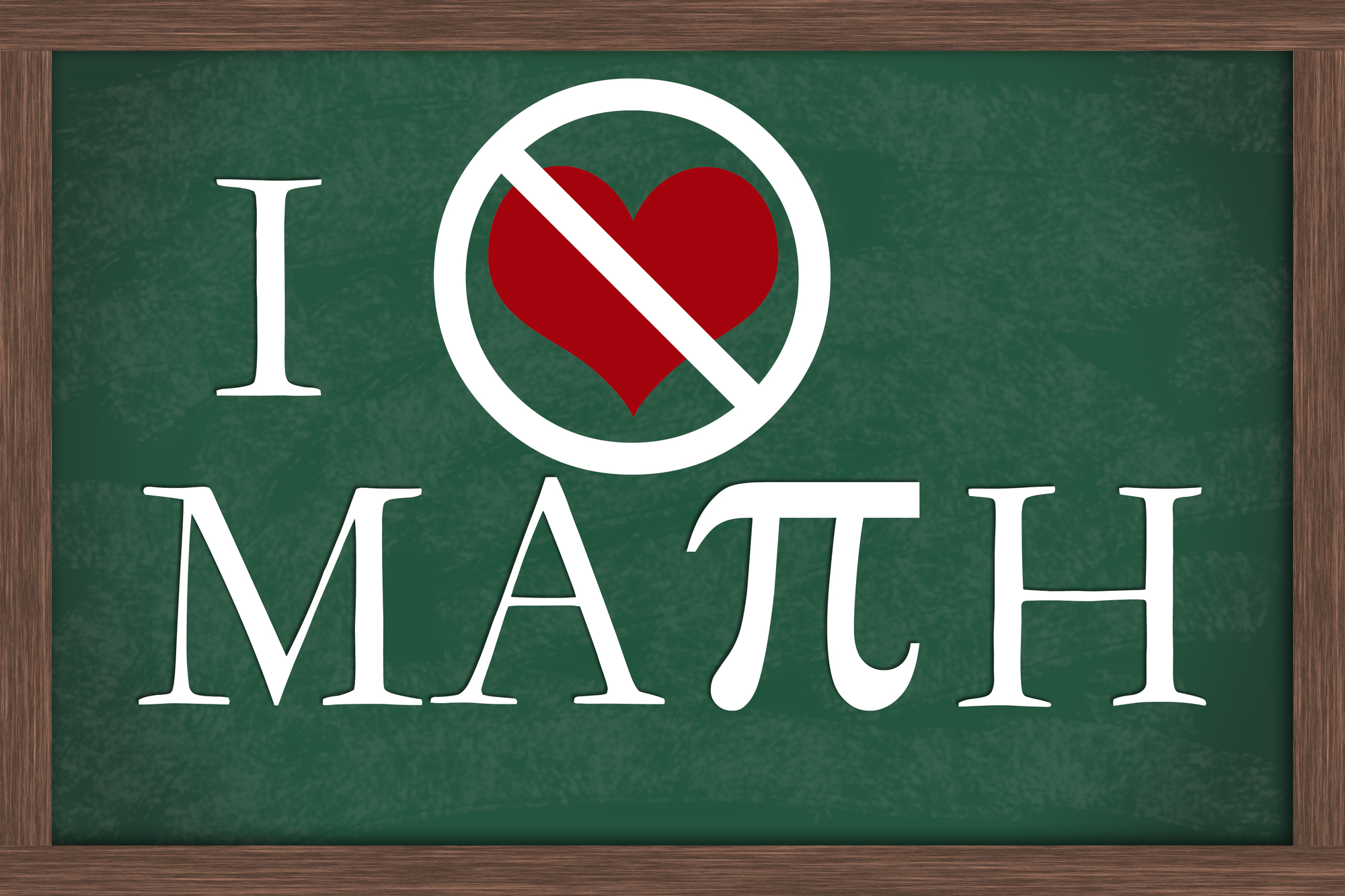Your Child Can Be Good at Math
By Deborah Reed
There’s a mystique about math that applies to no other subject. It’s as if humans were divided into two types: (1) those who are good in math and (2) those who aren’t. No one says: “I’m just not a history person” or “English is beyond me.” Yet we allow our children to say, “I’m not good at math,” as if this subject were in a category by itself, one you’re either born good at or you’re not.
While it is true that some children are more gifted in this subject than others, thirty years of teaching experience has taught me that those students who are “bad” in math have one thing in common: they have not mastered three essential skills. When these skills are mastered, they somehow become “good” in math. It is therefore not a matter of being “good” or “bad” but rather a matter of learning these three skills.
Neatness
The first of these skills is neatness. The first thing you, as a homeschooling parent, can do to improve your child’s math ability is to insist on neatness. Decades of teaching have reinforced this rule for me. My students who were “good” in math turned in neat papers.
Why is neatness so important? Some of it has to do with lining up. When you add, subtract, or work with decimals, everything must be lined up correctly, or you get the problem wrong. Some of it might have to do with the essence of the subject itself—math is an orderly, logical discipline, and perhaps the student must be orderly and logical to master it. But whatever the reason, neatness counts.
Step by Step
The neatness rule is something a parent can handle fairly easily. The second skill is a little harder, because math is what I call a “ladder” subject.
Let’s say you are taking a history class, the subject of which is World War II. During the previous semester, all your classmates have taken a class on World War I. You know nothing about World War I, so you are at a slight disadvantage—but only a slight one, because you don’t have to know everything about World War I to master the facts about World War II. That knowledge might help a little, but you could still do well in the class despite the fact that you didn’t take the previous semester’s history class. This is true because history is not a ladder subject. You don’t have to take it one step at a time; you can just plunge in the middle and take it from there.
Math is a ladder subject. You have to master one step before you can go to the next. Repeat: You have to master one step before you go to the next. You have to. If your child is given an assignment that requires three skills and he has mastered only one of these skills, he will not be able to complete the assignment. He simply does not have the background.
Again, this has nothing to do with being good or bad. Your child is only “bad” in math because, for whatever reason, she failed to master the skills necessary to handle the particular problem she has at the moment. If she has skipped two rungs on the math ladder, you must stop and teach her those skills before you can get down to the assignment at hand. Those of you who are knowledgeable in math can do this yourself; if not, your child will have to backtrack to previous lessons until these skills are mastered. This must be done, or the situation will just get worse and worse, and your child will get further and further behind. Trust me on this—if your child is having difficulty with second-grade math, he won’t have any greater success with the third-grade lessons; in fact, he will be even less successful.
Math Facts
We now come to the subject of math facts, the most important skill of all and the one hardest to explain. Bear with me as I propose a slightly fanciful analogy.
You have been hired to teach a young newlywed how to cook. You decide to start with something fairly easy: French toast. When you arrive to teach the lesson, you discover that the young bride does not have eggs. Everything stops while she goes next door to borrow some. Bread, she tells you, she does have, but only one slice. Everything stops while she runs to the convenience store to buy bread. She has no cinnamon, so everything stops while she once again makes a trip to the same neighbor who loaned her the eggs.
You’ve been there a good forty-five minutes and you haven’t even started the actual lesson yet. Why? Because you had to keep stopping.
You can’t learn anything if you have to stop every few seconds to just get the basics. The basics have to already be there. The student who does not know his math facts has this type of problem. He is constantly having to back up, to pause and think. He can’t stay on track simply because . . . he keeps leaving the track! I cannot overemphasize this. Your child will have difficulty with math all his life if he does not master math facts.
So, what are math facts, and how can you ensure your child knows them? Math facts are those things you see on flashcards, where one side says “8+2” and the other side says “10.” Using them is easy; you simply hold the “question” side up and your child looks at it and provides the answer. The difficulty lies in mastering them, because mastering means knowing something as well as you know your own name.
To repeat: Your child must know each fact as well as he knows his own name. If you wake him up from a deep sleep and ask what 7 times 4 is, he will mumble “28.” That is mastery, and if you do not work with him until he reaches this point with every fact, he will forever have difficulty with math.
Once you realize the importance of total mastery of these facts, you must now help your child learn them. The first step is to buy or make flashcards. Start with addition.
The second step is to determine which facts your child already knows. Hold the entire deck in one hand and take the top card and show it to your child. If he gives the answer to this question without thinking, then he has already mastered that particular fact and you can put that card down. If he gives the wrong answer, or pauses, even for a second, to think, then place that card at the back of the deck.
After you have gone through the entire deck this way, you should have a smaller deck in your hand. You do not have to work with the cards that you have laid down. It is now time for the third step, in which your child memorizes the facts he has not yet learned.
From the “he doesn’t know these” deck, choose five cards. Put them in one hand, and take the top card and show the question side to your child. He will either pause or give the wrong answer. You then give the right answer—with the question, not just the answer. So you will say “8+2 is 10.” Make him repeat this sentence about five or six times, and then put the card behind the other four cards and go through the same procedure with the next card. Do about six cycles like this with only these five cards. Do not drag this lesson on and on. Ten or fifteen minutes of flashcard drills a day is fine.
The next day, go over the five cards from the previous day. Perhaps your child will instantly give the answer to four of them. These four cards can then be moved to the “he knows these” stack, and the fifth flashcard becomes the first card of the new set of five. Every day you should practice with five cards until all the addition facts are mastered.
Subtraction is next, and you use the same procedure. You will find the going a little easier, because subtraction is the opposite of addition and he already knows the addition facts. Once subtraction is mastered, you are ready to tackle the multiplication facts.
There are some cards that you can automatically discard from the multiplication deck. Simply have the child memorize the rules for these:
• Anything times 1 is itself. (1 times 7 is 7)
• To multiply by ten, add 0 to the number. (8 times 10 is 80)
Once the multiplication facts are mastered, master the division cards, which, like subtraction, should go fairly quickly.
If this is done properly, your child will forever know these facts, just like he knows his name or the fact that grass is green. And it really doesn’t take more than ten or fifteen minutes a day, which is time well spent because future classwork time could very well be cut in half. And his test scores will be higher because he can work more quickly.
Neatness, step by step, and math facts. Work on these three areas of skill and you just may discover that your child is good in math after all!
Deborah L. Reed currently resides in a small bedroom community in Central Texas with her daughter, grandson, and two dogs. She is a retired science and math teacher. Deborah has published more than twenty short stories and essays. Her short story titled “Leah and Her Stuffed House” has been nominated for the 2011 Pushcart Prize award.
Copyright, 2011. Used with permission. All rights reserved by author. Originally appeared in The Old Schoolhouse® Magazine, Spring 2011.
Visit The Old Schoolhouse® at www.TheHomeschoolMagazine.com to view a full-length sample copy of the print magazine especially for homeschoolers. Click the graphic of the moving computer monitor on the left. Email the Publisher at Publisher@TheHomeschoolMagazine.com.


